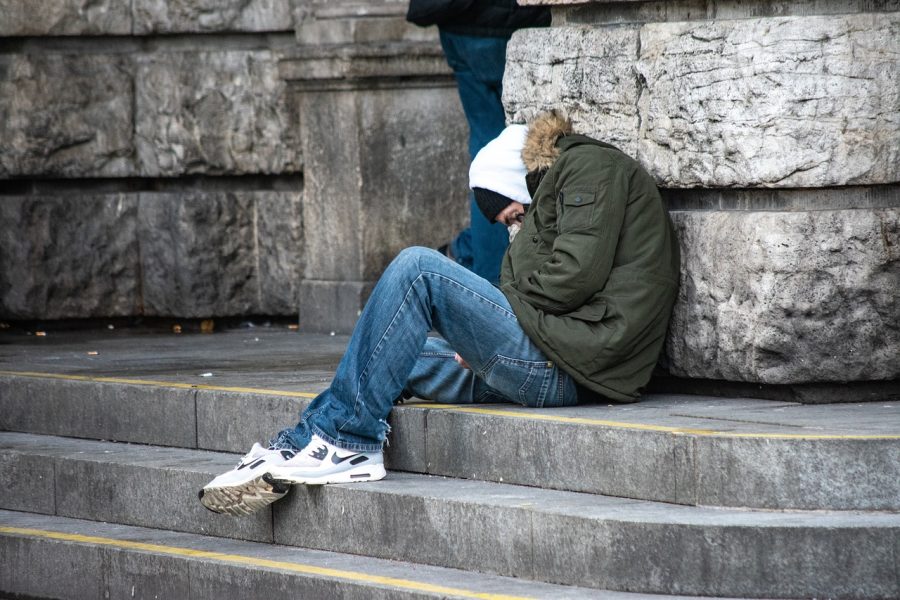Controversial Measure O’s proposed solutions for Sacramento unhoused earn voter approval
May 30, 2023
Aaima Arshad, a Mira Loma High School senior, is concerned about the housing crisis in Sacramento, and she feels sympathy for the unhoused individuals she sees in downtown Sacramento.
However, despite her concerns, Sacramento’s Measure O went under Arshad’s radar.
“I didn’t know about Measure O … but I thought it sounded like a good solution since homelessness has not been addressed as thoroughly as before,” she said.
The Sacramento City Council placed Measure O – the Emergency Shelter and Enforcement Act – before local voters on the November 2022 ballot. It passed by a margin of 52.1% to 47.9%.
Homelessness is a major issue in the Sacramento area, as it is in communities across California. The county, according to CalMatters, has more than 9,000 unhoused residents – and only about 2,400 shelter beds available.
The City Council voted to put Measure O on the ballot to try and address the homeless problem, which has proven extremely difficult to solve. Sac School Beat surveyed 30 students at Mira Loma High School to get a pulse on what the young people know about Measure O.
Measure O’s proposed solution for the unhoused in both the City of Sacramento and Sacramento County contains several components:
- The City would be required to maintain emergency shelter spaces equal in number to at least 60% of the city’s homeless population.
- Setting up homeless encampments on private or public property would be unlawful, and a misdemeanor criminal offense. However, the city could not enforce the prohibition against individuals who camp on public property unless emergency shelter space is available, and the individual refuses to move from the camp to an available shelter.
- $5 million of the city’s annual general fund budget would be reserved to address the issue.
- Measure O cannot become operational, or enforceable, until the city and county enter a “legally-binding partnership agreement” that specifies how each will help provide mental health, substance abuse, child welfare, domestic violence and other services to homeless people.
The Sac School Beat survey at Mira Loma showed student unawareness of Measure O was a significant issue.
When Mira Loma students were asked about Measure O, all students interviewed agreed that affordable housing was still an issue that needed to be addressed in the Sacramento area. However, around 88% remained unaware that Measure O had even been proposed as a possible solution.
After showing students the official legal language outlined in the voter ballot, just 28% believed that the measure was an effective solution to solve the housing shortage.
From the legal language alone and before learning more about the implications of the measure, Arshad said it represented a step in the right direction.
“I think it would be nice since it’s actually helping to fight against homelessness,” she said. “Although it’ll only provide the minimum amount of shelter, it’s still better than nothing.”
Janelle Choi is the president of Mira Loma’s Eunoia club which helps address the needs of the unhoused community. She does not believe Measure O is a good solution.
“I do not believe homelessness is an issue that will be solved by simply increasing the number of emergency shelter spaces and criminalizing unhoused individuals for setting up encampments,” she said. “There are a wide range of reasons why individuals choose not to stay in emergency shelter spaces and making encampment a criminal offense will worsen the stigma that surrounds homelessness.”
Choi’s club has worked to help the unhoused community in its own ways. Eunoia has donated resources and meals to several local organizations, including Loaves and Fishes, Saint John’s Program for Real Change, Next Move Homeless Services, and more. These organizations work to assist unhoused individuals through direct services.
Students provided their own take on the housing crisis.
“I believe the county should invest more on guiding and advising programs for the homeless,” Mira Loma senior Rui Teh said. “Many people who end up homeless have made poor decisions and life choices in their past. By providing them the education or guidance they need to make better choices, the homeless population can slowly rebuild their lives. This statement doesn’t only apply to resolve the current homeless crisis, but also provides a more future-proof plan. By investing more in education, current generations are less likely to end up homeless.”
Choi agreed. To her, solutions should use funding more effectively by including more realistic approaches and goals to the housing crisis.
“The county should allocate resources to building more affordable, permanent housing units for low income families and increase funding to existing programs that provide long term supportive housing,” she said. “Establishing more low-barrier shelters where individuals can first have a safe place to stay, and then receive employment and mental health services, would greatly benefit the county.”
High school students understand the overwhelming need to address the housing crisis, and they are more than ready to help. However, at least at Mira Loma, most believe Measure O is not the way to go.
“Although providing shelter is important,” Teh said, “I believe it is more important for the county to construct a long-term solution rather than provide quick but ineffective fixes to the homeless crisis.”


